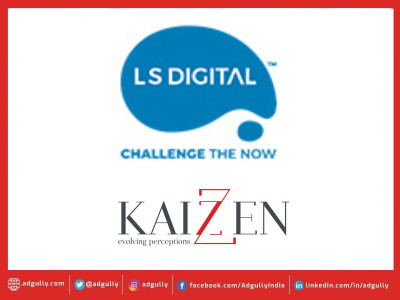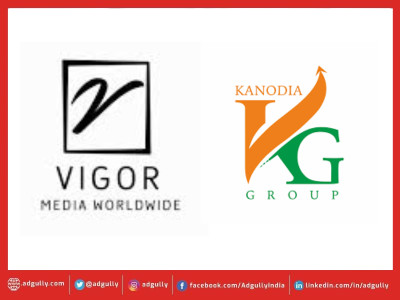National PR Day: Beyond Press Releases - Unraveling the new Public Relations paradigm
In the fast-paced world of information, the way we build and manage reputations has undergone a dramatic shift. Public relations (PR) is no longer confined to press releases and media briefings. Over the past decade, the PR landscape has transformed into a dynamic ecosystem, embracing digital tools, social media engagement, and a focus on transparency. Today, on National PR Day, Adgully delves into this evolution, exploring the key factors that have propelled PR to the forefront of navigating the ever-growing stream of information and shaping public perception in a digital age.
The public relations industry in India emerged nearly three decades ago, initially rooted in journalism principles as brands sought visibility in the media, says Bhaskar Majumdar, Head - Marketing Communication, CSR and Digital, Egis South Asia. At its inception, he adds, the industry heavily emphasized ‘Relationships’ or ‘Media relations’ as the key to success. However, over time, he says, it evolved into a more sophisticated approach, focusing on crafting strategic narratives, precise messaging, and targeted audience engagement in a meticulously planned manner.
“The onset of COVID-19 accelerated the digital transformation, with a shift towards digital consumption of news during lockdowns when print newspapers were inaccessible. This necessitated a significant adjustment in campaign planning and media strategies. In contemporary campaigns, brands are adopting an integrated communications approach, blending digital and traditional methods seamlessly. With digital and social media becoming primary channels for content consumption, there has been a notable transformation in the role of PR professionals and corporate communicators. This shift prioritizes strategic thinking over solely relying on media relations, embracing an omnichannel integrated approach. The choice of media mix now depends on factors such as the nature of the brand, its services, and products, as well as the target audience and market segments. For many brands, leveraging digital platforms offers real-time engagement, creativity, and immersive experiences, making it a more impactful communication tool,” Majumdar adds.
“The PR industry has come a long way – from being told to build on media relations by going for media rounds (and doing media rounds until the soles wore off – joote ghisne chahiye, literally!) to navigating the social media minefields. COVID fast-forwarded the digital revolution and this transformed our lives including PR. Today social media engagement, influencer marketing, and data-driven storytelling complement traditional media outreach. Data analytics guide strategic storytelling that resonates with target audiences, while online reputation management safeguards brand image in a world where online presence is paramount. This shift, driven by the critical need for a sound digital presence and navigating a complex information landscape, solidifies PR's role as a vital function for building trust and managing reputation in today's information-rich business world,” says Jyotsana Dash Nanda, AVP, Corporate Communication, DS Group. According to her, the internet fosters a more interactive environment.
“PR now emphasizes two-way communication, actively engaging with audiences on social media platforms and addressing customer concerns promptly. Example: An FMCG brand might partner with food bloggers on Instagram to showcase its new range of say ready-to-cook oats, reaching a wider audience and generating organic buzz. Social media has empowered consumers to become information broadcasters democratizing information/news. Negative experiences can go viral quickly, damaging brand reputations. PR professionals play a vital role in crisis communication, actively managing online narratives and fostering brand transparency. In today's information overload, deepfake, misinformation, etc., trust is paramount. Hence today communication professionals focus on building genuine relationships with key stakeholders through content marketing, thought leadership initiatives, and social responsibility programmes. In a world of online reviews and instant opinions, a company's reputation is more fragile than ever. Communication professionals help build and protect brand image through proactive communication and effective crisis management,” Nanda adds.
We have witnessed a radical shift in media consumption over the last decade, observes Chetan Mahajan, Founder & CEO, The Mavericks.
“With mobile becoming the primary device for media consumption, traditional media has lost its dominant position as a channel. There has also been a huge shift in content consumption patterns alongside the proliferation of new channels of information dissemination, like social media. While content consumption has gone up many folds, people are consuming less news today than they did 10 years ago. The single largest factor changing this dynamic is easy and affordable access to social media and the desire to become a mini celebrity. The balance of influence has shifted from news platforms to influencers and from diversity to singularity as we get ruled by algorithms,” says Mahajan.
Over the past decade, the PR landscape has undergone significant transformation, propelled by technological advancements, shifts in media consumption habits, and changes in societal expectations, notes Mrinall Dey, VP & Head - PR & Corporate Communications, MobiKwik. “One of the most notable changes is the rise of digital media platforms, which have revolutionized the way information is disseminated and consumed. Social media, in particular, has emerged as a powerful tool for PR professionals to engage with audiences directly, bypassing traditional gatekeepers and enabling real-time communication.”
“The proliferation of online news outlets, blogs, and user-generated content has democratized the media landscape, providing PR practitioners with a multitude of channels to reach their target audiences. This fragmentation of media has necessitated a more strategic and nuanced approach to PR, with an emphasis on tailored messaging and audience segmentation. Another key factor driving the growing importance of PR in today’s information-driven society is the rise of reputation management. In an era of heightened scrutiny and public skepticism, organisations are increasingly recognizing the value of proactive reputation management to safeguard their brand image and maintain stakeholder trust,” Dey adds.
Bhavya Sharma, Director Communications & ESG, Urban Company, too states that public relations has taken a complete 180-degree turn in the last decade.
“While earlier the reliance on print media was extreme, it has declined significantly and is chipping away. Still part of the PR mix, but no longer the sole medium. With the advent of digital marketing and consequent pressure on PR to measure outcome and show impact has changed how the ecosystem works. With consumers relying more on digital channels, you can see the waning importance of traditional media. Add to that the increase in influencers, the line between marketing and PR often gets blurry. Further, given that everything is now just a tap away thanks to social media, even a small incident can take the form of a full-blown crisis and enter the news cycle as part of trending news,” adds Sharma.
The changing role
With the proliferation of digital platforms and social media, the role of PR professionals has evolved to effectively manage and navigate the ever-changing media landscape. The digital revolution has transformed PR from a media relations-centric discipline to a strategic, data-driven approach to building and managing brand reputation in a dynamic and interconnected world.
According to Chetan Mahajan, the role of PR professionals is to grow, sustain, and protect brands' reputations. “This has not changed, and it never will. The means of achieving this is effective storytelling that resonates with the stakeholders. Transparency and speed of connecting with your stakeholders were choices 10 years ago. They are not any more. PR professionals relied 100% on earned influence. Owned, shared, and paid influence was a choice. It’s not any more. Many PR professionals thrived on media relations; they can’t any more. Today, PR professionals need to be multi-skilled. Connecting the brand purpose with compelling stories and distributing them to the stakeholders through earned, owned, shared, and paid platforms calls for multiple skills to achieve it efficiently and effectively,” explains Mahajan.
PR agencies will have to move away from their traditional PR strategies and services, and will instead have to offer integrated communications as a service offering, says Bhavya Sharma.
“They will have to see a PR campaign not just from a here-and-now lens but also how it can be expanded into a sustained communication plan to build clients’ brand and reputation. Another big area I see where PR agencies can add significant value is localised and vernacular content. As social media has blurred geographic boundaries, regional influencers now rival national celebrities. Understanding local intricacies and incorporating them into a brand’s PR strategy is crucial for standing out. Additionally, impactful sustainability and CSR initiatives should not merely serve as greenwashing tactics. They are integral to reputation management and brand building, as consumers increasingly prefer socially responsible companies,” she adds.
Social media and digital platforms have emerged as a powerful tool for PR professionals to engage with audiences directly, says Mrinall Dey. “The proliferation of digital platforms and social media has fundamentally transformed the role of PR professionals, requiring a more dynamic and adaptable approach to managing and navigating the ever-changing media landscape. In today's digital age, PR professionals must be adept at leveraging a diverse array of channels to engage with audiences, build relationships, and shape narratives. PR professionals must constantly monitor online conversations, anticipate emerging trends, and respond swiftly to both opportunities and challenges in real-time. By embracing digital platforms and social media as integral components of their communication strategies, PR professionals can effectively amplify their messages, reach wider audiences, and drive meaningful engagement in an increasingly interconnected and fast-paced media environment,” adds Dey.
The digital explosion has transformed the role of the communications professional from being mere gatekeepers to effective storytellers engaging with audiences with agility, opines Jyotsana Dash Nanda.
According to her, communication professionals today craft narratives that resonate directly with audiences on social media, fostering two-way conversations to build brand loyalty.
“They leverage data to measure success and tailor messages accordingly, while constantly monitoring online conversations to swiftly address potential crises with transparent communication. Hence the key skill sets required for corporate communications professionals of today in this ever-changing ecosystem of communication professionals of today are agility, data-driven narratives with an eye on the audience,” she adds.
PR professionals never had it easy anyway and now the stress has only grown manifold as any big or small incident or even a stray post on social media can metamorphose into a crisis, observes Bhavya Sharma.
“This is especially true in consumer-facing and services industries. For PR professionals, it’s no longer just about managing media relations. They have to be adept at social media, content creation, data analytics, crisis management, influencer and thought leadership. To be able to pull all this together, they have to be really good at strategic thinking and planning. One great thing, however, for the PR professionals is that learning never stops. The more you are aware of and in sync with what’s happening around you and the next big trend, the more you will grow and be deft at handling the changing landscape. Take for instance, how effectively you can leverage AI in your everyday work will prepare you for what’s to come,” says Sharma.
The industry has undergone a profound transformation driven by the proliferation of data, widespread internet accessibility, and the omnipresence of smartphones, points out Bhaskar Majumdar. According to him, the advent of social media and digital technologies has revolutionized the communication landscape, emphasizing the imperative need for a thorough understanding of these platforms.
“Knowing what strategies work and what don't is paramount. Each social media platform possesses unique merits, reach, and limitations. The role of PR professionals has evolved into a 24/7 commitment, involving constant monitoring, listening, and analysis of digital and social trends. This active engagement is crucial for reaching, nurturing, and engaging with target audiences irrespective of their location. In today's digital age, conversations are ongoing, whether brands are actively participating or not. The key lies in listening attentively, engaging meaningfully, and fostering relationships. Rather than solely focusing on selling, the approach should be collaborative, positioning oneself as a co-creator rather than a marketer,” he adds.
According to Majumdar, several key points underscore the evolving nature of social and digital media:
- It transcends ‘mass’ media, catering to niche audiences.
- It goes beyond mere 'influence' to encompass opinion building, decision-making, and support.
- It thrives on dynamic, interactive content rather than static information.
- It cannot be entirely controlled, necessitating adaptability and responsiveness.
- Feedback is instantaneous, requiring prompt attention and adjustment.
New strategies or approaches
In light of the projected growth of the PR industry in India, what new strategies or approaches are PR agencies adopting to stay ahead in this competitive market and meet the evolving needs of their clients?
Given the anticipated growth of the PR industry in India, PR agencies are implementing several new strategies and approaches to maintain a competitive edge and effectively address the evolving needs of their clients, says Bhaskar Majumdar.
“Agencies are prioritizing digital transformation, recognizing the increasing importance of online platforms and social media channels. This involves adopting innovative digital tools, platforms, and technologies to enhance client communication, outreach, and engagement. Agencies are moving towards integrated communication approaches, combining traditional PR methods with digital strategies to create comprehensive campaigns that resonate across multiple channels. This integration ensures a cohesive brand message and maximizes audience reach and impact. PR agencies are leveraging data analytics and insights to inform their strategies and measure campaign effectiveness. By analyzing audience behaviour, sentiment, and engagement metrics, agencies can tailor their approaches to better meet client objectives and drive results. Agencies are increasingly incorporating content marketing into their PR strategies, producing high-quality, relevant content that attracts and engages target audiences. This may include blog posts, articles, videos, infographics, and other multimedia content distributed across various channels.
Recognizing the influence of social media influencers, Majundar says that PR agencies are forging strategic partnerships with relevant influencers to amplify brand messaging and reach niche audiences. These collaborations help increase brand visibility, credibility, and engagement within specific target demographics.”
He further says, “With the rise of social media and instant communication channels, PR agencies are investing in robust crisis management strategies to effectively navigate and mitigate reputational risks. This involves proactive monitoring, rapid response protocols, and transparent communication to manage crises swiftly and effectively. To cater to the diverse needs of clients, PR agencies are expanding their service offerings beyond traditional media relations to include areas such as corporate communications, public affairs, employee engagement, CSR initiatives, and more. This diversification allows agencies to provide holistic solutions that address clients' broader communication challenges. Overall, PR agencies in India are embracing innovation, digitalization, and strategic thinking to stay ahead in the competitive market and deliver impactful results for their clients in an ever-evolving landscape.”
According to Jyotsana Dash Nanda, the pandemic was a turning point for the PR industry and the digital revolution transformed it. “Digital marketing and communication were on the front foot and PR regained its sheen for being cost-effective. The rise of online media demanded quality content, making authentic storytelling and thought leadership essential for reputation management. The pandemic fostered collaboration between PR and media, with video calls becoming the new normal.”
Going forward, she feels that there could be challenges considering the potential recession that is looming large at us and agencies will hit the most. However, she adds, some exciting trends are emerging and if the agencies leverage them in advance, they will be the least hit during the recession.
Nanda predicts, “AI tools like ChatGPT will revolutionize content creation, impacting PR strategies. Hot topics like the metaverse and cybersecurity present PR opportunities. In India, the rollout of 5G offers a chance for the tech industry to leverage PR. High-quality content will be key for PR success, with targeted narratives replacing generalized pitching to all. Research-driven storytelling is poised to become the heart of PR and communication, driving brand credibility and business growth in the years ahead so PR agencies need to recalibrate and adapt quickly to remain relevant and effective.”
According to Chetan Mahajan, the top three strategies include:
- True integration is different from mixing or bringing all communication channels together. Until storytelling is harmonized across multiple channels, it can’t do much good for the brand. This can’t be achieved efficiently until resources are multi-skilled. This can only be built from the ground up, as it is a rarity amongst the ones who have been in this industry for a long time.
- Deep collaboration is a must to deploy the game plan. Today’s young talent brings an inherent social and digital world perspective. The veterans bring experience in business comprehension and storytelling, and multiple functional experts bring depth in respective functions like creativity, content, media relations, etc. Deep collaboration that breaks the barriers across functions, hierarchies, and client teams is a game changer.
- Enabling PR teams with an AI assistant and training them to be 2-3x their ability can address the talent gap on the one hand and the need for speed on the other hand.
According to Mrinall Dey, as the PR industry in India continues to experience significant growth, PR agencies are adopting new strategies and approaches to stay ahead in this competitive market and meet the evolving needs of their clients.
- Embracing digital transformation and integrating technology into their service offerings:PR agencies are leveraging data analytics, artificial intelligence, and automation tools to gain deeper insights into audience behaviour, track campaign performance, and optimize communication strategies in real-time.
- Focusing on specialization and niche expertise to differentiate themselves in the market:Rather than offering generic PR services, many agencies are developing specialized teams with deep industry knowledge and expertise in areas such as technology, healthcare, finance, and sustainability. This allows them to provide tailored solutions and strategic counsel that address the unique challenges and opportunities facing clients in specific sectors.
- Placing greater emphasis on creativity and storytelling to cut through the clutter and capture audience attention.
PR and overall business success
As businesses increasingly recognize the importance of reputation management and brand perception, how do PR pros see the relationship between PR and overall business success evolving in the coming years?
According to Chetan Mahajan, growing and sustaining a reputation has never been more challenging. He stresses that reputation can make or break brands. “In the digital age, this process can happen in a few months/years, unlike many decades in the past. Paid influence is an important mix that can complement a solid foundation built on earned, owned, and shared influence. Business growth is directly proportional to its reputation. Reputation can never be bought, yet it is so fragile. Public relations has never been more important to brands who are in it for the long haul,” he adds.
Bhavya Sharma foresees the following changes:
- Tackling AI and misinformation: This will be the most critical aspect that will come to fore. Companies and business leaders will be susceptible to AI-generated misinformation, deep fakes and more. Tackling these new-age tools will be crucial.
- Integration of brand and PR teams: I believe given how the role of PR is changing rapidly and becoming almost all-encompassing, more and more companies will integrate their brand and PR teams into one to ensure singular messaging across the board seamlessly.
- Rise in employee advocacy: PR teams will play a crucial role in supporting and promoting employees through employee advocacy efforts, distinct from internal communications. Companies will aim to cultivate and empower internal thought leaders and company advocates. PR professionals' expertise in thought leadership and leadership profiling will be invaluable in this endeavour.
- Elevation to strategic core function: PR division will likely be given its due and seen as a strategic core function. As a result, one will hopefully also see more Chief Communications Officers (CCOs).
As businesses continue to acknowledge the critical role of reputation management and brand perception in their success, the relationship between PR and overall business success is expected to evolve in several ways in the coming years, says Bhaskar Majumdar.
According to him, PR professionals will increasingly be viewed as strategic partners within organisations, working closely with senior leadership to align PR objectives with broader business goals.
This partnership will involve integrating PR strategies into overall business strategies to drive growth, enhance reputation, and build brand equity. There will be a greater emphasis on measuring the impact of PR efforts on business outcomes. PR professionals will be expected to demonstrate tangible results and ROI, linking PR activities to key performance indicators such as brand awareness, customer acquisition, revenue growth, and stakeholder engagement.
Majumdar believes that PR will become more closely integrated with marketing and communications functions to create cohesive, multi-channel campaigns that effectively engage target audiences and drive business results. This integration will blur the lines between traditional PR and marketing activities, leading to more holistic communication strategies. As brand reputation becomes increasingly important in the digital age, PR professionals will play a central role in managing and safeguarding organisations’ reputations. This will involve proactive reputation management efforts, crisis preparedness, and transparent communication to build trust and credibility with stakeholders.
“PR will play a key role in positioning executives and organisations as thought leaders within their industries. By leveraging media relations, content marketing, speaking opportunities, and other channels, PR professionals will help establish and amplify their clients' expertise, influence, and credibility. With the growing influence of digital and social media, PR strategies will need to adapt to the changing media landscape. PR professionals will need to leverage digital tools, analytics, and social listening to engage with audiences, monitor conversations, and manage brand reputation across online platforms. The relationship between PR and overall business success will become increasingly symbiotic, with PR playing a central role in shaping brand perception, driving stakeholder engagement, and ultimately contributing to business growth and success in the years to come,” concludes Bhaskar Majumdar.
As the digital age deepens its grip, the relationship between PR and business success is undergoing a metamorphosis and is gradually getting a seat in the boardrooms, opines Jyotsana Dash Nanda.
“In today’s information age, consumers value authenticity and transparency. To build trust, businesses need clear and consistent messaging across all platforms. Successful PR goes beyond media mentions; it demonstrably impacts the bottom line through metrics like website traffic, social engagement, and brand sentiment analysis. Metrics like website traffic driven by PR campaigns, social media engagement generated by PR initiatives, and brand sentiment analysis will be crucial for quantifying PR’s value. Imagine a company launching a social responsibility campaign that garners positive media coverage, leading to a surge in customer inquiries and a significant boost in sales. This data-driven approach allows PR to confidently showcase its contribution to overall business success. Strategic partnerships with influencers, industry leaders, and even partners can amplify reach and messaging. PR can also be a force for positive change by championing social causes that resonate with stakeholders. This way PR can transform from a mere communication channel into a strategic business vertical/department driving customer engagement and business success,” says Jyotsana Dash Nanda.
Mrinall Dey also believes that as businesses increasingly recognize the critical importance of reputation management and brand perception, the relationship between PR and overall business success is poised to evolve significantly in the coming years.
“As businesses navigate an increasingly complex and interconnected media landscape, PR will play an even more integral role in shaping and safeguarding brand reputation. PR professionals will be tasked with not only managing crises and shaping public perception but also with proactively building and enhancing brand trust and credibility. As consumer expectations continue to evolve, PR will be instrumental in helping businesses communicate their values, foster authentic connections with stakeholders, and demonstrate their commitment to social responsibility and sustainability,” concludes Dey.






















Share
Facebook
YouTube
Tweet
Twitter
LinkedIn